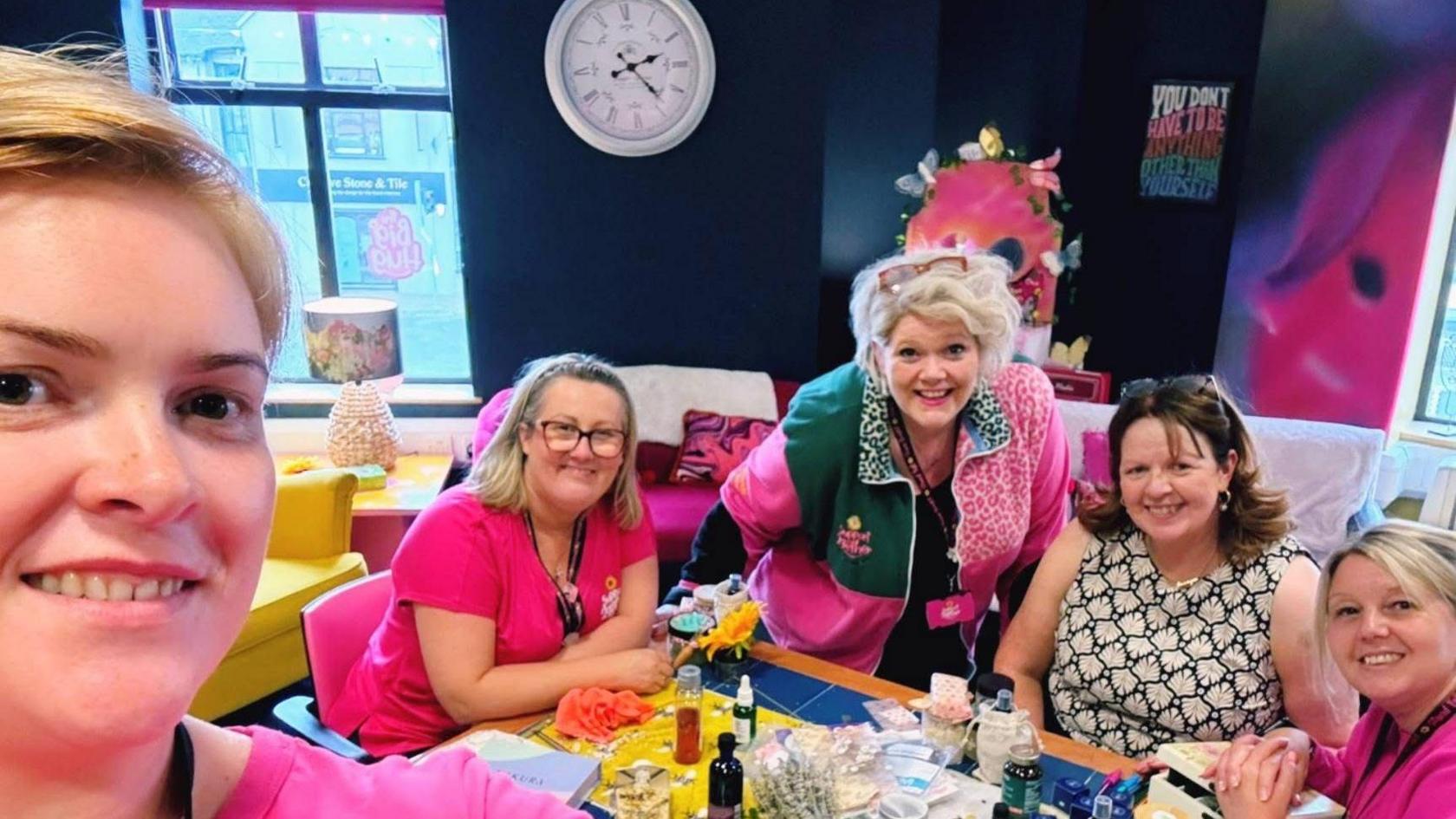How therapy dog Scooby (doo-be-doo) has left pupils animated
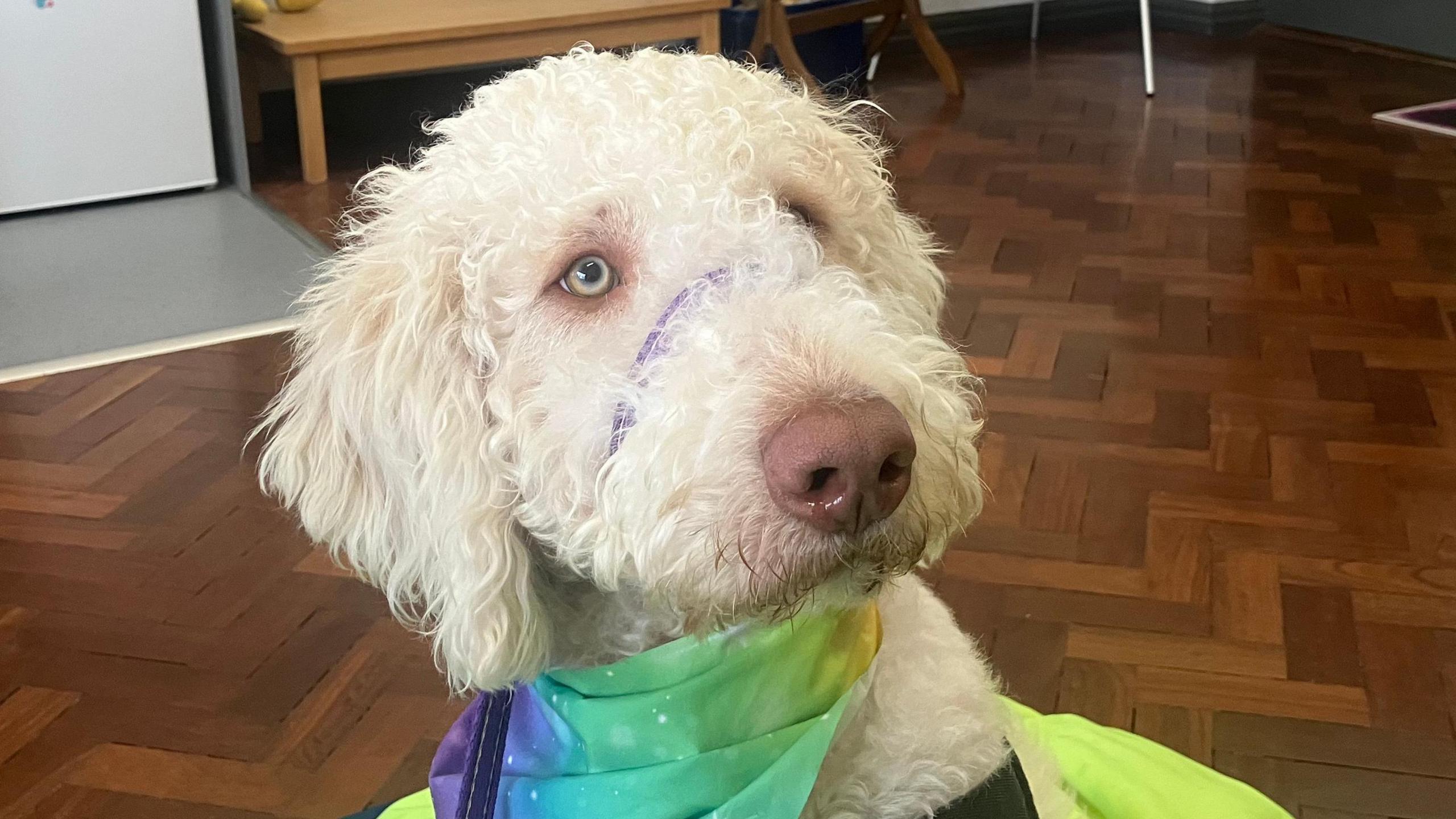
Scooby has increased school attendance
- Published
Scooby the labradoodle is the newest member of staff at an Armagh primary school.
And the pupils of Mount St Catherine's have even written a special song for him which they sing at morning assembly.
Mount St Catherine's is one of only seven mainstream schools in Northern Ireland with a therapy dog like Scooby.
Principal Ciara Farley said he has had a dramatic effect on pupils' attendance.
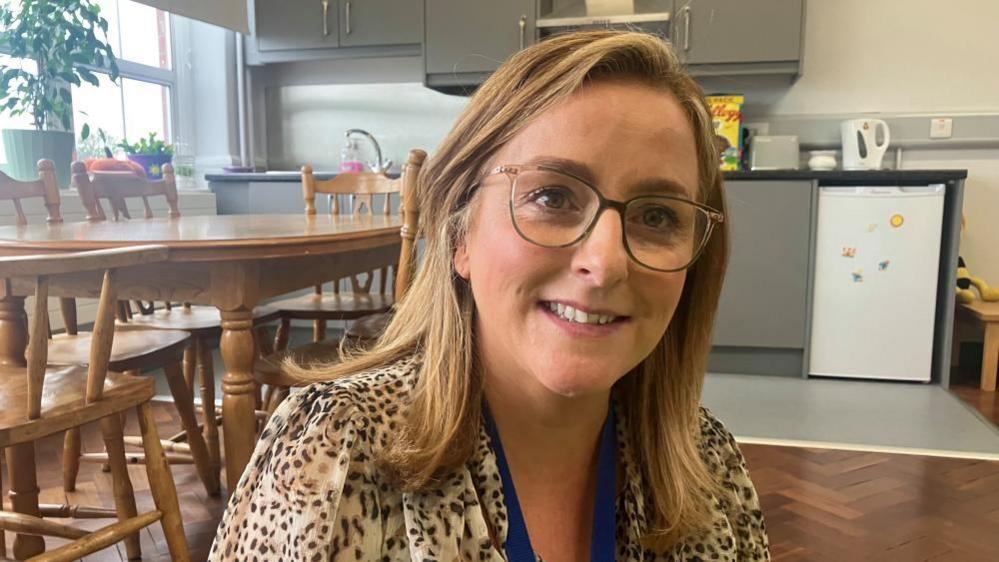
Ciara Farley is the principal of Mount St Catherine's Primary School
"Our attendance has vastly improved," she told BBC News NI.
"Our children really are so keen to get to school because they want to see Scooby at the gate first thing in the morning.
"And obviously when our children are in school they will learn."
Although Mount St Catherine's is a mainstream primary school, it has a very diverse pupil population.
About 60 of the 160 pupils have Special Educational Needs (SEN) while 93 are newcomer pupils.
A newcomer is a pupil who speaks a different language at home than the one used in their school, according to the Department of Education (DE).
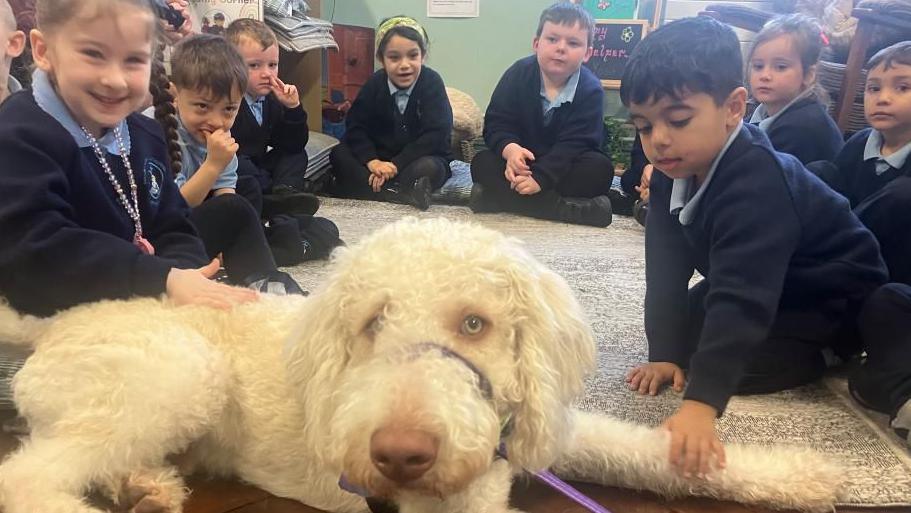
Scooby is helping to encourage non-verbal children to speak in class
How has Scooby encouraged non-verbal children to speak?
Jolene McCaul is the teacher in Mount St Catherine's Primary who is Scooby's foster mum, and takes him home every day.
She has been trained by Assistance Dogs NI to work with him, and she teaches in one of the school's classes for children with SEN.
"The difference has been so rewarding, it's worth all the work that's needed to get Scooby fully trained," she said.
"We have children that are non-verbal that are actually starting to speak.
"They're calling Scooby by name, they're saying goodbye, they're saying hello.
"These are all things that have just come about when Scooby has come about."
What do pupils think about Scooby?
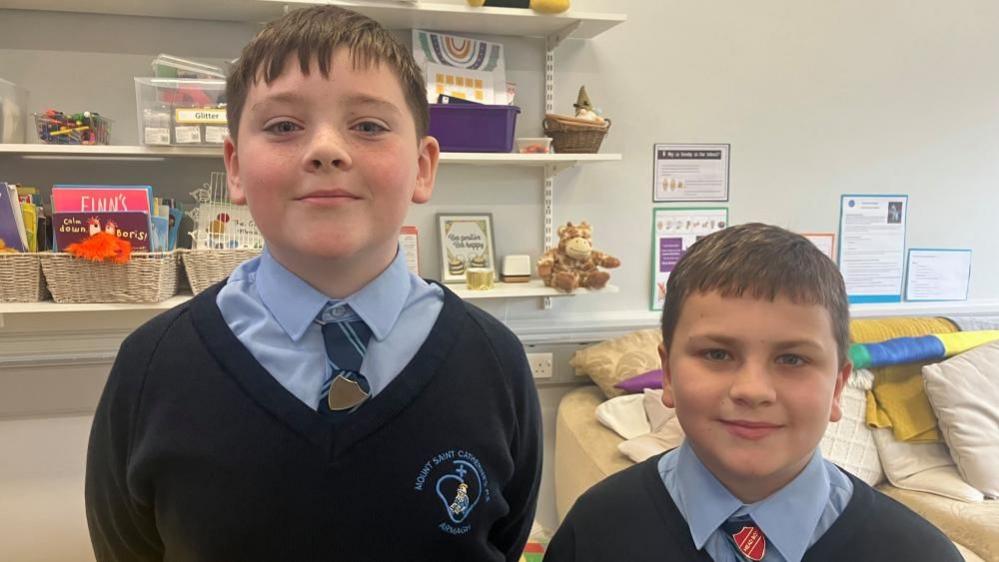
T.J (left) and Conor (right) talk about the joy that Scooby brings to the school
"We're very much first and foremost a nurturing school," Ms Farley said.
"Our children in the mainstream school, or in any school, cannot learn unless they feel relaxed in school, unless they are happy."
And that is where Scooby makes quite a difference, according to the pupils themselves.
Eleven-year-old TJ said that Scooby was "a wonderful friendly dog and he helps out everyone".
"If you give him a treat he'll do loads of tricks," he said.
Ten-year-old Conor said that Scooby "brings joy and happiness to our school".
"When children are anxious he'll always go and care for them and we're lucky to have him," Conor said.
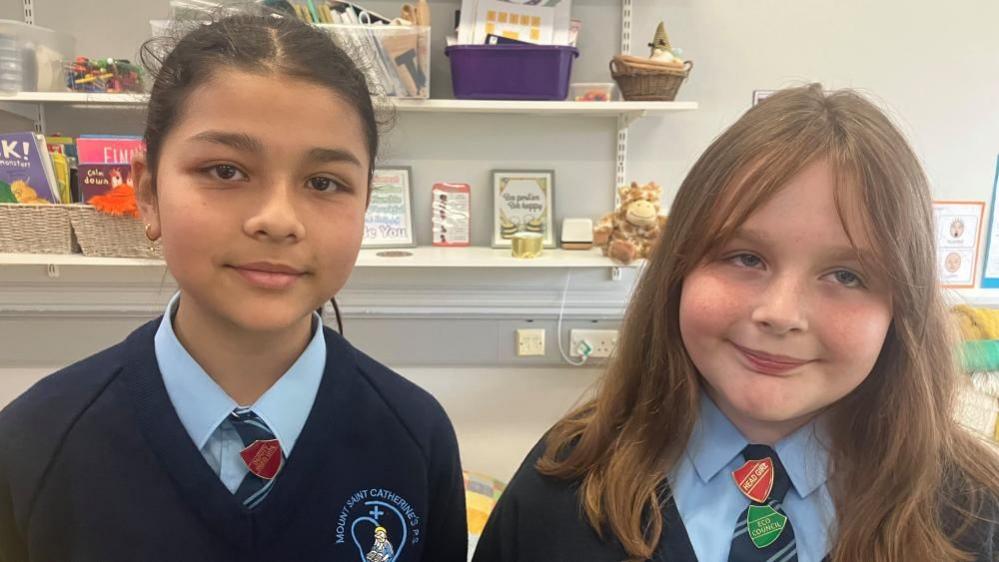
Aimee (left) and Eimear (right) love having Scooby in the school
For 10-year-old Eimear, Scooby helps calm pupils and make them feel welcome.
"Anytime he's out in the yard or anything we always get to pet him," she said.
"He really likes playing football with us and he's really playful."
Eleven-year-old Aimee said that Scooby "likes to go visit everybody".
"I think it's a good idea to have a therapy dog in a school because if you need help with your feelings and everything you can just go to Scooby's room."
How was Scooby trained to work in school?
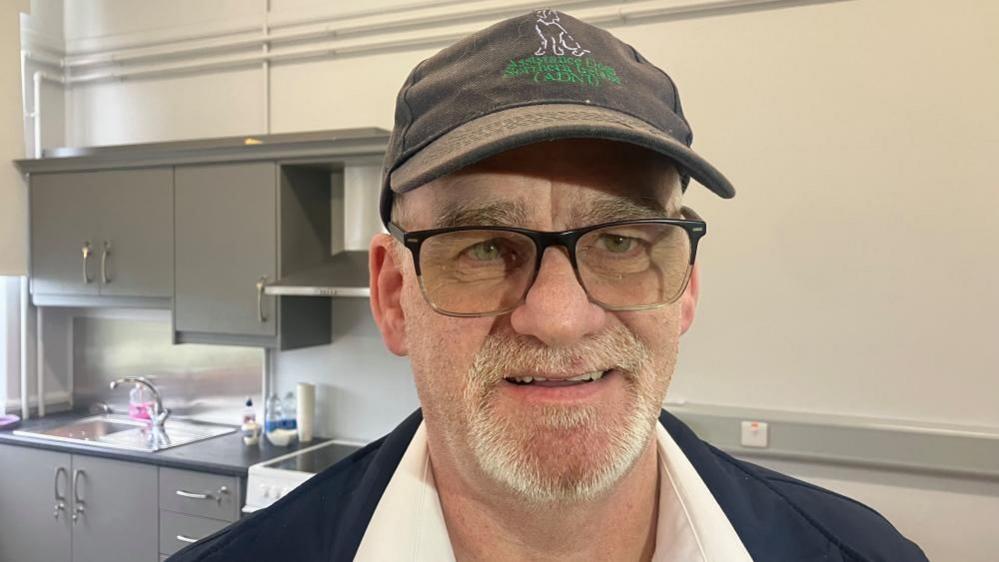
Gary Jordan from Assistance Dogs NI says a dog can make a real difference in schools
Scooby was trained by the Assistance Dogs NI organisation.
According to Gary Jordan from Assistance Dogs NI, Scooby and other dogs start to train to work in schools when they are young pups.
"Children will communicate with a dog before they will communicate with humans, and I have found that day in, day out," he said.
Scooby the therapy dog: 'We're lucky to have him'
"A child will come over and pet a dog rather than come over and talk to a person.
"The dog doesn't judge so the dog will just stand there and let the child stroke or pet them or brush them.
"I have left schools in tears before because of the difference that a dog can make."
Related topics
- Published28 September 2024
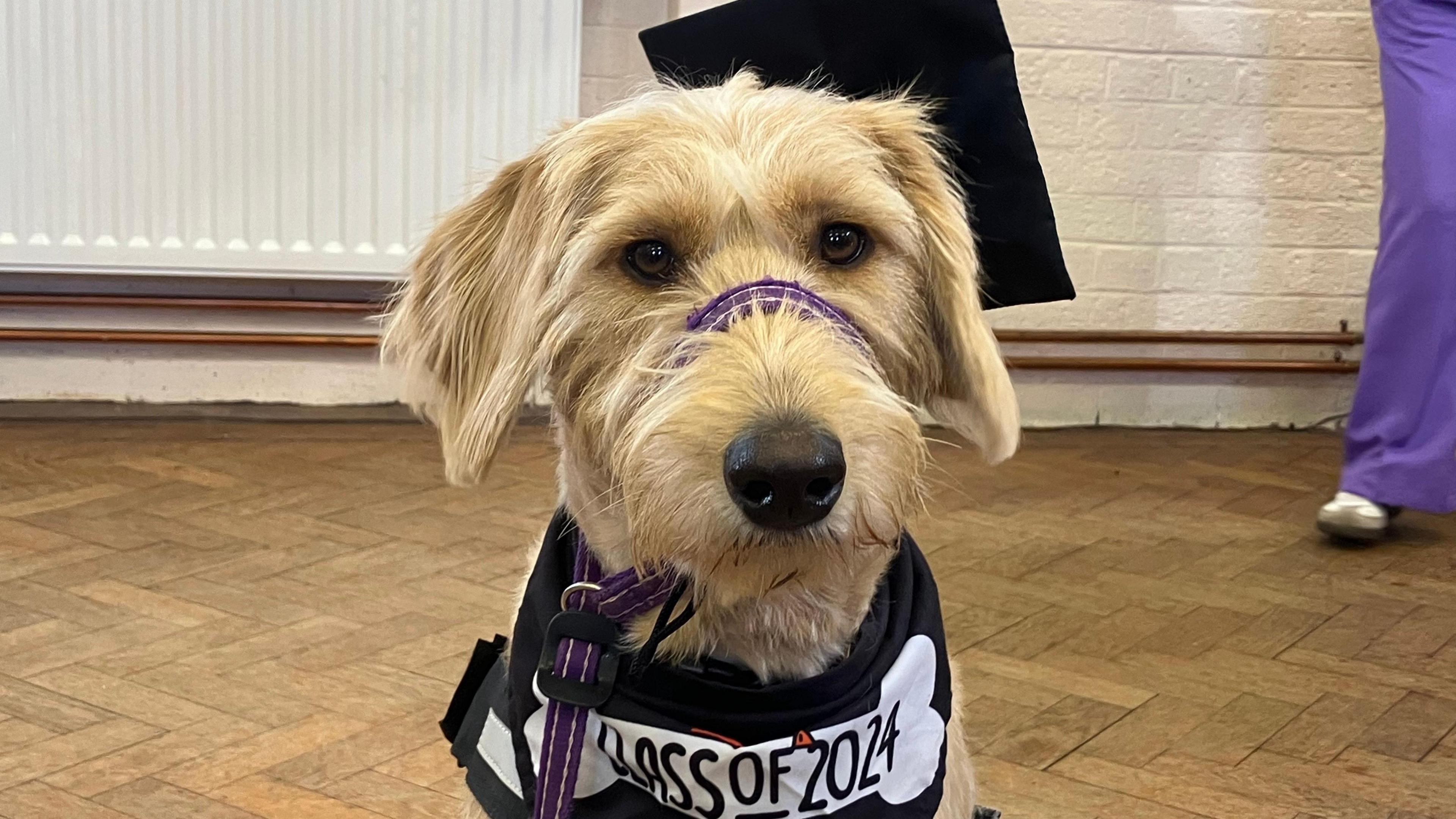
- Published27 May 2022
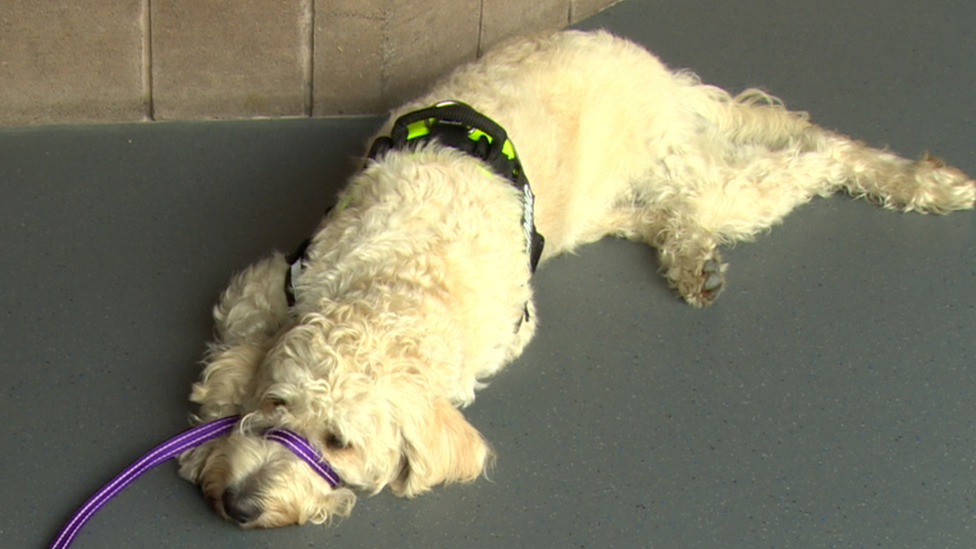
- Published26 September
